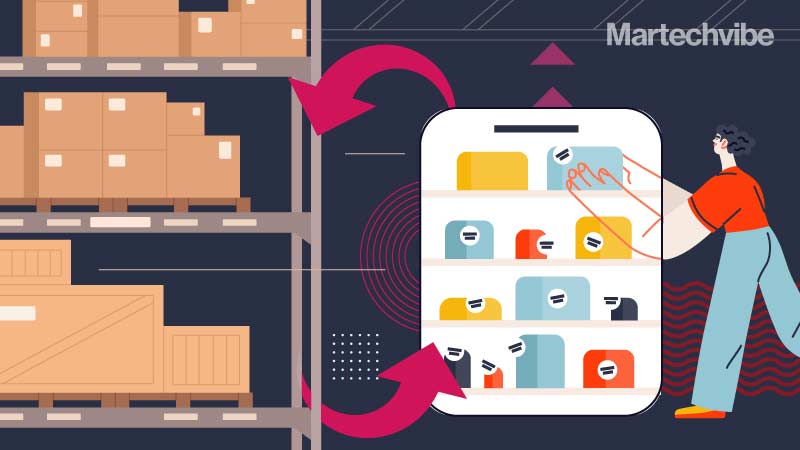When BORIS Becomes A Logistical Burden
Goods bought online and returned over the counter can cause wastage and losses. Fortunately, there are solutions to turn the tide in your favour For companies, the shirt or the shoe or anything else that did not fit the customer’s bill could turn out to be a trillion-dollar problem, one that involves logistical nightmare and […]
Topics

Goods bought online and returned over the counter can cause wastage and losses. Fortunately, there are solutions to turn the tide in your favour
For companies, the shirt or the shoe or anything else that did not fit the customer’s bill could turn out to be a trillion-dollar problem, one that involves logistical nightmare and even wastage.
The phenomenon of online sales over the last two decades has gained massive favour over long, unwinding queues at retailers. While this explosive growth has come with numerous benefits, it has also amplified one of the largest problems of ecommerce – returns.
There are many channels in the way customers return the item they did not like. Perhaps the most dreaded way is when an item purchased online is returned to a store for convenience.
Buy online, return in-store, or BORIS, is an omnichannel retail policy that allows consumers to make online purchases and, if they are unsatisfied with the product, return it to the brick-and-mortar store instead of shipping it back.
When people don’t touch things before shopping, they tend to send a lot of that stuff back. For omnichannel retail, dealing with these returns have somehow become a separate industry.
Somewhere, the companies too are feeding the problem with free shipping, free returns, and constant discount codes, which invariably promote incessant buying. Last year, retailers from the US took back $102 billion worth of merchandise that was purchased online, according to the National Retail Federation. Overall, $428 billion-worth merchandise was returned.
Logistical nightmare
The average return rate of BORIS items ranges from 15 per cent to 30 per cent. For clothing, the rate could shoot up because of bracketing – a practice that involves making purchases in the wrong size.
The process of figuring out what to do with unwanted items is a laborious task that consumes a lot of the company’s workforce potential. Workers at the sorting facilities have to discern the differences between the items – they need to understand if they are used, clean or salvageable in order to decide their future.
In most cases, things just pile up. While some items are dissected for valuable parts, in the majority of circumstances they are destroyed.
A prime example of this phenomenon was witnessed in June 2021, when British Channel ITV discovered how Amazon destroyed millions of unused products every year. The channel, while going undercover at the Dunfermline fulfilment centre in Scotland, saw that 124,000 items were marked as “destroyed”. Only 28,000 items were set aside for donation.
Several companies can find it difficult to get returned products back into the sales stream of new products. And, donations are few because it could hamper a brand value. For instance, if a company is seen too frequently giving away its products for free, consumers might develop a negative attitude towards the brand – they may not want to spend on things that are given away for free.
Tech solutions
Companies could use data to optimise returns. It may involve the creation of a return protocol that includes data-driven software and algorithms to help sales employees to determine how to handle returns. For instance, the returned items should be tagged in such a way that by merely scanning, it should tell whether the product should be resold or marked out.
Furthermore, having a centralised inventory can help the firm offer product replacements. For instance, retailers like Target often rely on data and centralised inventory to offer product replacement suggestions to consumers, instant refunds, store credits, or discounts on similar products. These features include the probability of the shoppers replacing their returned item with another purchase instead of demanding returns. If the software is integrated with artificial intelligence, it can analyse the data and tell the retailer to make the most revenue from the replacement.
Making transaction history available at all times is another key feature that retailers can adopt. A return policy involves the provision of receipt as proof. A customer may not be able to locate the receipt while returning the product, thus digitising them by making them available on email or app is the way forward.
The companies can also make use of cloud-based financial services and returns management solutions. Several startups like Happy Returns and ShipBob provide the reverse logistics to mitigate problems arising from BORIS without hampering the customer experience.
Some of these firms can process immediate refunds to products purchased online but returned in person. These companies can link users to stores, carriers, and customer relationship management platforms.
BORIS and the wastage that it causes can seem like a complete loss-making mechanism for companies. But, making BORIS has its benefits. The ease that it offers may attract more consumers to the business. Thus, with the help of some technological help, BORIS can be looked at as an omnichannel strategy that allows retailers to take advantage of the synchronicity between their online and brick-and-mortar businesses.
If you liked reading this, you might like our other stories
Do a Sales Forecast For Your Business The Right Way
Company Close Up: The Criteo Chronicle









































































































